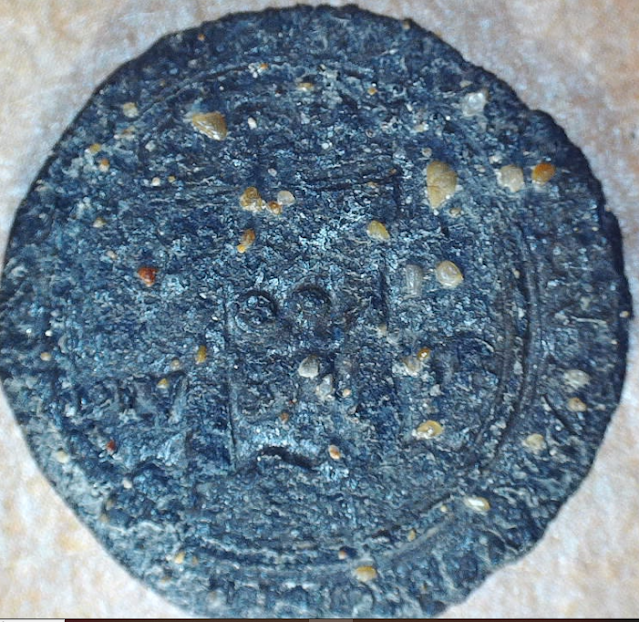Written by the TreasureGuide for the exclusive use of the Treasure Beaches Report.
 |
| 2022 Quarter Photographed Under Black Light. |
I recently read an article in Numismatic News in which a coin expert and authenticator explained that he viewed coins with a stereoscopic microscope and fluorescent light. I have found photography with fluorescent lighting useful for some things, for example corundum gemstones, calcite crystals, and certain types of glass, but never really tried to use it with coins. So I gave it a try.
In the above photo, if you look closely at the area up around the Y, you will see that the flat surface is sort of bubbly or rough. That is something I didn't see when I used incandescent lighting. You can also see a few other things that were not apparent with incandescent lighting, but for me, that didn't mean much.
Maybe if I had a better setup than my inexpensive monocular microscope and old black light from the 70s, it would have worked better, or it could be that I was not able to interpret what I was seeing like the professional authenticator that wrote the article. Both factors probably played a roll.
I did take some photos of an 16th century encrusted dug reale, but the fluorescent lighting did not help at all with that. During my experiments I did take some additional photos that illustrate the importance of lighting. And for viewing old dug coins, sometimes the natural eye and light is best.
Here are a few examples of photos of the 16th century dug 2-reale which has not yet been cleaned. I am not showing those photos that best show the coin. I am showing the photos that illustrate the importance of lighting. Once again, the fluorescent lighting with magnification on this coin was so didn't seem to help at all. Big fail. The encrustation, silver sulfide, or whatever did not photograph well with fluorescent lighting.
Below is the reverse and obverse of a Treasure Coast dug 16th century two-reale taken with a regular camera and natural lighting.
 |
| 16th Century Uncleaned Two-Reale. |
A number of these types of coins were found on the Treasure Coast in 2020 and 2022. They are from the reign of Carlos and Juana (Anglicized: Charles and Joanna). I won't get into details today, because my topic today is viewing and photographing. This reale provides a tough example. Some details can be seen, but it isn't easy.
Here is a larger image of the same coin.
 |
| Same Uncleaned 16th Century Two Real |
The 16th cemtury reales from the Juana and Carlos period are more round and flat than most of the reales from the 1715 Fleet. In fact, these reales are more coins rather than cobs. There is a difference, although it seems the terminology isn't always used consistently. The 1715 Fleet cobs were made quickly, and they have a vary in shape a lot. That gives them a certain individuality and charm. Nonetheless, there are a lot of different types and subtypes of the Juana and Carlos reales.
 |
| Same 16th Century Two Reale. |
 |
| Same 16th Century Two Reale. |
 |
| Source; MagicSeaWeed.com. |